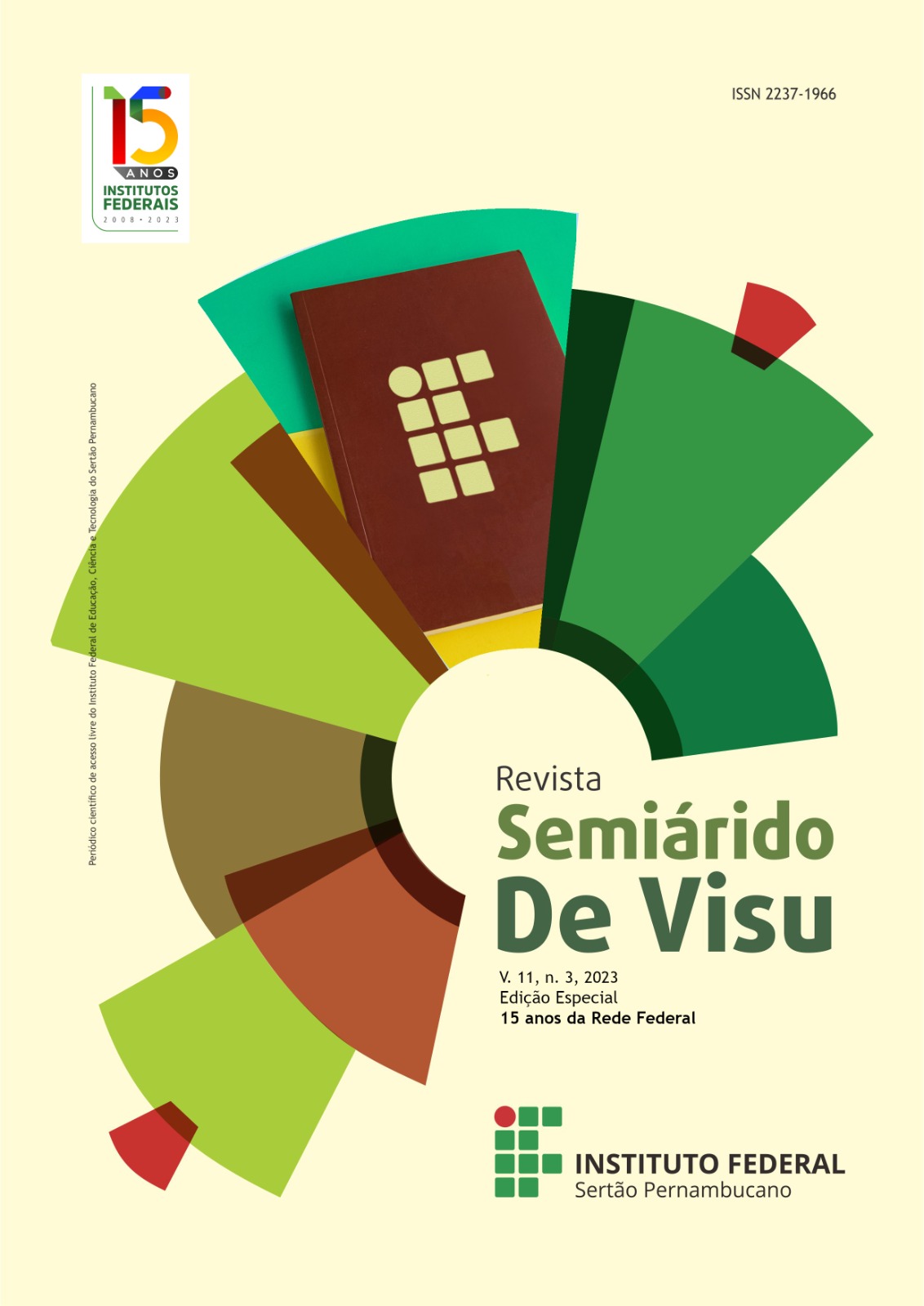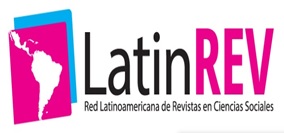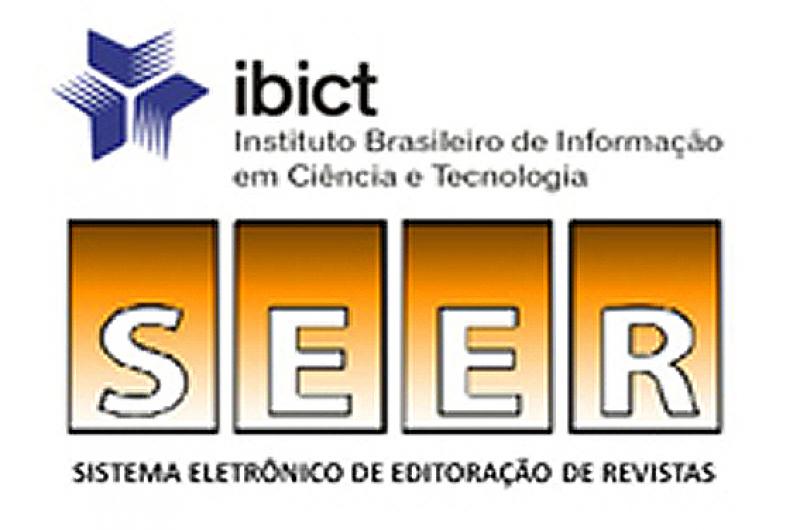Barragens subterrâneas como alternativa para garantia de segurança hídrica em regiões semiáridas: desafios e oportunidades
Visualizações: 758DOI:
https://doi.org/10.31416/rsdv.v11i3.492Palavras-chave:
Abastecimento de Água, Escassez Hídrica, Soluções Sustentáveis, Análise Bibliométrica, VOSViewerResumo
As barragens subterrâneas integram um grupo de soluções sustentáveis utilizadas para aumentar a disponibilidade de água em áreas de escassez hídrica. O objetivo deste artigo foi analisar os principais desafios e perspectivas acerca da pesquisa cientifica sobre o uso desta tecnologia em regiões semiáridas. Para isso, realizou-se uma análise bibliométrica a partir de publicações hospedadas na base de dados Scopus no período de 1973 a 2022. Os resultados mostraram que o interesse pelo tema aumentou 300% na última década e atualmente está em amplo crescimento. A busca por estratégias para diminuir os impactos das mudanças climáticas tem norteado as discussões a nível global. As principais tendências do tema envolvem tópicos sobre gestão integrada de recursos hídricos, modelagem, qualidade da água e metodologias para tomada de decisão. No Brasil, as barragens subterrâneas têm sido usadas para garantir o acesso à água em regiões de escassez hídrica, mas ainda é necessário que a tecnologia seja aprimorada para que possa ser melhor utilizada frente às demandas impostas pelas mudanças do clima.
Referências
ABD-ELATY, I.; STRAFACE, S.; KURIQI, A. Sustainable saltwater intrusion management in coastal aquifers under climatic changes for humid and hyper-arid regions. Ecological Engineering, v. 171, 1 nov. 2021.
ALKARADAGHI, K. et al. Geospatial Technique Integrated with MCDM Models for Selecting Potential Sites for Harvesting Rainwater in the Semi-arid Region. Water, Air, and Soil Pollution, v. 233, n. 8, 1 ago. 2022.
AL-SHAMMARI, M. M. A. et al. Integrated Water Harvesting and Aquifer Recharge Evaluation Methodology Based on Remote Sensing and Geographical Information System: Case Study in Iraq. Natural Resources Research, v. 30, n. 3, p. 2119–2143, 1 jun. 2021.
ALVES, E. J. C. et al. Limits and conditions for the exploitation of alluvial aquifers in the Brazilian semi-arid region. Revista Brasileira de Recursos Hidricos, v. 23, 2018.
BARBOSA, G. et al. Sustentabilidade de agroecossistemas com barragens subterrâneas no semiárido brasileiro: a percepção dos agricultores na Paraíba 1 Sustainability of agroecosystems with subsurface dams in Brazilian semiarid: perception of farmers in Paraíba. [s.d.].
BHAGAT, C.; MOHAPATRA, P. K.; KUMAR, M. Unveiling the extent of salinization to delineate the potential submarine groundwater discharge zones along the North-western coast of India. Marine Pollution Bulletin, v. 172, 1 nov. 2021.
BOUFALA, M. H. et al. Assessment of the best management practices under a semi-arid basin using SWAT model (case of M’dez watershed, Morocco). Modeling Earth Systems and Environment, v. 8, n. 1, p. 713–731, 1 mar. 2022.
BOUWER, H. Role of groundwater and artificial recharge in future water resources management. Future groundwater resources at risk, p. 491–497, 1994.
CAYIR ERVURAL, B.; EVREN, R.; DELEN, D. A multi-objective decision-making approach for sustainable energy investment planning. Renewable Energy, v. 126, p. 387–402, 1 out. 2018.
CHINNASAMY, P. et al. Sustainable development of water resources in marginalised semi-arid regions of India: Case study of Dahod in Gujarat, India. Natural Resources Forum, v. 45, n. 2, p. 105–119, 1 maio 2021.
CIRILO, J. et al. Soluções para o suprimento de água de comunidades rurais difusas no semi-árido brasileiro: avaliação de barragens subterrâneas. researchgate.net, 2003.
CUNHA, A. P. M. A. et al. Extreme Drought Events over Brazil from 2011 to 2019. Atmosphere 2019, Vol. 10, Page 642, v. 10, n. 11, p. 642, 24 out. 2019.
DORTAJ, A. et al. A hybrid multi-criteria decision making method for site selection of subsurface dams in semi-arid region of Iran. Groundwater for Sustainable Development, v. 10, 1 abr. 2020.
DOS SANTOS, A. L. M. et al. Global research trends on anaerobic digestion and biogas production from cassava wastewater: a bibliometric analysis. Journal of Chemical Technology and Biotechnology, n. September, 2021.
EMBRAPA - Empresa Brasileira de Pesquisa Agropecuária. Instruções técnicas da EMBRAPA Semiárido – Barragem Subterrânea. Petrolina, PE: EMBRAPA Semiárido, 2011. 2 p. Disponível em: <https://ainfo.cnptia.embrapa.br/digital/bitstream/item/54893/1/INT96.pdf>. Acesso em: 20 nov. 2020.
FATHY, I.; AHMED, A.; ABD-ELHAMID, H. F. Integrated management of surface water and groundwater to mitigate flood risks and water scarcity in arid and semi-arid regions. Journal of Flood Risk Management, v. 14, n. 3, p. e12720, 1 set. 2021.
FILHO, E. L. DA S. et al. Evaluation of the alluvial use potential for a construction of underground dams in the semi-arid region of Pernambuco. Revista Brasileira de Geografia Fisica, v. 13, n. 5, p. 2402–2416, 2020.
FOSTER, S. et al. Brazil, Kenya: Subsurface dams to augment groundwater storage in basement terrain for human subsistence. World Bank Sustainable Groundwater Management Lessons from Practice, p. 1-8, 2004
FREITAS, D. et al. Water Quality of Cisterns and Underground Dams in Semiarid Regions: Case Study of Afogados da Ingazeira, Pernambuco – Northeast Brazil. [s.d.].
GHAZAVI, R.; VALI, A. B.; ESLAMIAN, S. Impact of Flood Spreading on Groundwater Level Variation and Groundwater Quality in an Arid Environment. Water Resources Management, v. 26, n. 6, p. 1651–1663, 1 abr. 2012.
GUIRAUD, R. Interflux dams: their advantage for Saharan and Sahelian Africa. The-state-of-the-art of hydrology and hydrogeology in the arid and semi-arid areas of Africa. Proc. Sahel Forum, Ouagadougou, 1989, p. 320–329, 1990.
HANJRA, M. A.; QURESHI, M. E. Global water crisis and future food security in an era of climate change. Food Policy, v. 35, n. 5, p. 365–377, 1 out. 2010.
HE, S. et al. Application and problems of emergy evaluation: A systemic review based on bibliometric and content analysis methods. Ecological IndicatorsElsevier B.V., , 1 jul. 2020a. . Acesso em: 1 dez. 2020
HE, Z. et al. Impact of human activities on coastal groundwater pollution in the Yang-Dai River plain, northern China. Environmental Science and Pollution Research, v. 27, n. 30, p. 37592–37613, 1 out. 2020b.
HOQUE, M. A. AMIN et al. Site suitability analysis for the construction of water reservoirs in drought-prone areas of Bangladesh using geospatial techniques. World Water Policy, v. 8, n. 1, p. 65–85, 1 maio 2022.
JAMALI, I. A.; OLOFSSON, B.; MÖRTBERG, U. Locating suitable sites for the construction of subsurface dams using GIS. Environmental Earth Sciences, v. 70, n. 6, p. 2511–2525, nov. 2013.
KHARAZI, P.; YAZDANI, M. R.; KHAZEALPOUR, P. Suitable identification of underground dam locations, using decision-making methods in a semi-arid region of Iranian Semnan Plain. Groundwater for Sustainable Development, v. 9, p. 100240, 1 out. 2019.
LADO, C. Socio-economic factors influencing sustainable water supply in Botswana. GeoJournal, v. 41, n. 1, p. 43–53, 1997.
LIMA, A. D. O. et al. Revista IRRIGA. IRRIGA, v. 18, n. 2, p. 200–211, 18 jun. 2013.
LLAMAS, M. R. La insercion de las aguas subterraneas en los sistemas de gestion integrada. Boletin Geologico y Minero, v. 110, n. 4, p. 9–25, jul. 1999.
LOPES, M. S. et al. Capítulo 2 Barragem subterrânea. Agropedia Brasilis, 2003.
MAO, G. et al. Research on biomass energy and environment from the past to the future: A bibliometric analysis. Science of the Total Environment, v. 635, p. 1081–1090, 1 set. 2018.
MARTÍN-ROSALES, W. et al. Estimating groundwater recharge induced by engineering systems in a semiarid area (southeastern Spain). Environmental Geology, v. 52, n. 5, p. 985–995, maio 2007.
MD KHUDZARI, J. et al. Bibliometric analysis of global research trends on microbial fuel cells using Scopus database. Biochemical Engineering Journal, v. 136, p. 51–60, 15 ago. 2018.
MOIWO, J. P. et al. Impact of water resource exploitation on the hydrology and water storage in Baiyangdian Lake. Hydrological Processes, v. 24, n. 21, p. 3026–3039, 15 out. 2010.
MOZZI, G. et al. Hydrologic Assessment of Check Dam Performances in Semi-Arid Areas: A Case Study From Gujarat, India. Frontiers in Water, v. 3, 20 abr. 2021.
ONDER, H.; YILMAZ, M. Underground Dams - A Tool of Sustainable Development and Management of Groundwater Resources. European Water, v. 11, p. 35–45, 2005.
OUHAMDOUCH, S. et al. Vulnerability and impact of climate change processes on water resource in semi-arid areas: In Essaouira basin (Morocco). Green Energy and Technology, v. PartF2, p. 719–736, 2016.
PEREIRA, N. S. et al. Mid to late 20th century freshening of the western tropical South Atlantic triggered by southward migration of the Intertropical Convergence Zone. Palaeogeography, Palaeoclimatology, Palaeoecology, v. 597, p. 111013, 1 jul. 2022.
PHILIPP, A.; GRUNDMANN, J. Integrated Modeling System for Flash Flood Routing in Ephemeral Rivers under the Influence of Groundwater Recharge Dams. Journal of Hydraulic Engineering, v. 139, n. 12, p. 1234–1246, dez. 2013.
PINHEIRO JUNIOR, C. R. et al. Can topography affect the restoration of soil properties after deforestation in a semiarid ecosystem? Journal of Arid Environments, v. 162, p. 45–52, 1 mar. 2019.
PRIYAN, K. Issues and Challenges of Groundwater and Surface Water Management in Semi-Arid Regions. Groundwater Resources Development and Planning in the Semi-Arid Region, p. 1–17, 2021.
QUILIS, R. O. et al. Measuring and modeling hydrological processes of sand-storage dams on different spatial scales. Physics and Chemistry of the Earth, v. 34, n. 4–5, p. 289–298, 2009.
RITCHIE, H.; EISMA, J. A.; PARKER, A. Sand Dams as a Potential Solution to Rural Water Security in Drylands: Existing Research and Future Opportunities. Frontiers in Water, v. 3, p. 31, 14 abr. 2021.
ROBLES-ARENAS, V. M. et al. Sulphide-mining impacts in the physical environment: Sierra de Cartagena-La Unión (SE Spain) case study. Environmental Geology, v. 51, n. 1, p. 47–64, out. 2006.
SANTOS, R. A.; DE, J.; LEMOS, J. S. O SEMIÁRIDO NO MUNDO. Encontros Universitários da UFC, v. 3, n. 1, p. 5937–5937, 2018.
SEFIANI, S. et al. Evaluation of Groundwater Quality and Agricultural use Under a Semi-arid Environment: Case of Agafay, Western Haouz, Morocco. Irrigation and Drainage, v. 68, n. 4, p. 778–796, 1 out. 2019a.
SHENG, Z. Impacts of groundwater pumping and climate variability on groundwater availability in the rio grande basin. Ecosphere, v. 4, n. 1, 11 jan. 2013.
SILLERO, L. et al. A bibliometric analysis of the hydrogen production from dark fermentation. International Journal of Hydrogen Energy, 29 jun. 2022.
SILVA FILHO, E. L. DA. Avaliação do potencial de aproveitamento de aluviões para a construção de barragens subterrâneas no Semiárido Pernambucano. 12 maio 2022.
SOARES, M. O. et al. Challenges and perspectives for the Brazilian semi-arid coast under global environmental changes. Perspectives in Ecology and Conservation, v. 19, n. 3, p. 267–278, 1 jul. 2021a.
TSAI, F. M. et al. Municipal solid waste management in a circular economy: A data-driven bibliometric analysis. Journal of Cleaner Production, v. 275, p. 124132, 2020.
VAN ECK, Nees Jan; WALTMAN, Ludo. Software survey: VOSviewer, a computer program for bibliometric mapping. Scientometrics, v. 84, n. 2, p. 523-538, 2010.
VASQUES, G. M. et al. Ground penetrating radar (GPR) models of the regolith and water reservoir of an underground dam in the Brazilian semiarid region. Journal of Applied Geophysics, v. 206, 1 nov. 2022.
VINSON, D. S. et al. Biogeochemistry at the zone of intermittent saturation: Field-based study of the shallow alluvial aquifer, Rio Grande, New Mexico. Geosphere, v. 3, n. 5, p. 366–380, 2007.
VON DER HEYDEN, C. J.; NEW, M. G. Groundwater pollution on the Zambian Copperbelt: Deciphering the source and the risk. Science of the Total Environment, v. 327, n. 1–3, p. 17–30, 5 jul. 2004.
YEUNG, A. W. K. et al. The ethnopharmacological literature: An analysis of the scientific landscape. Journal of Ethnopharmacology, v. 250, n. November 2019, 2020.
Downloads
Publicado
Como Citar
Edição
Seção
Licença
Copyright (c) 2023 Revista Semiárido De Visu

Este trabalho está licenciado sob uma licença Creative Commons Attribution 4.0 International License.















